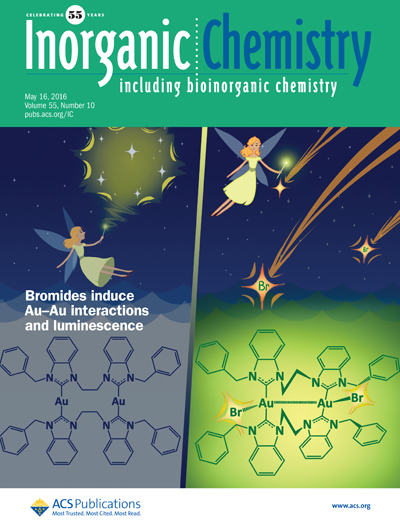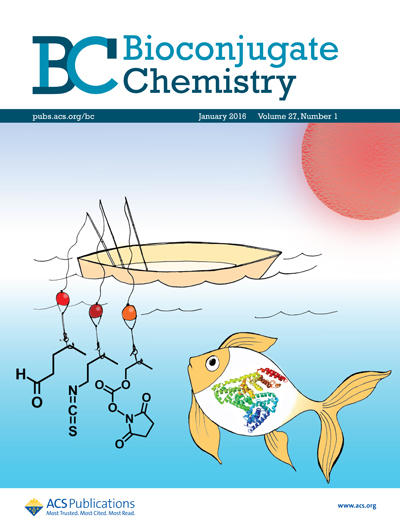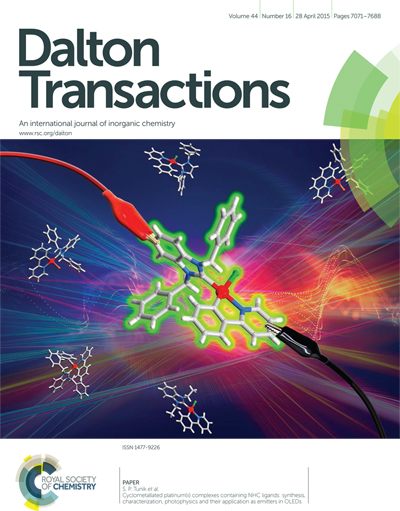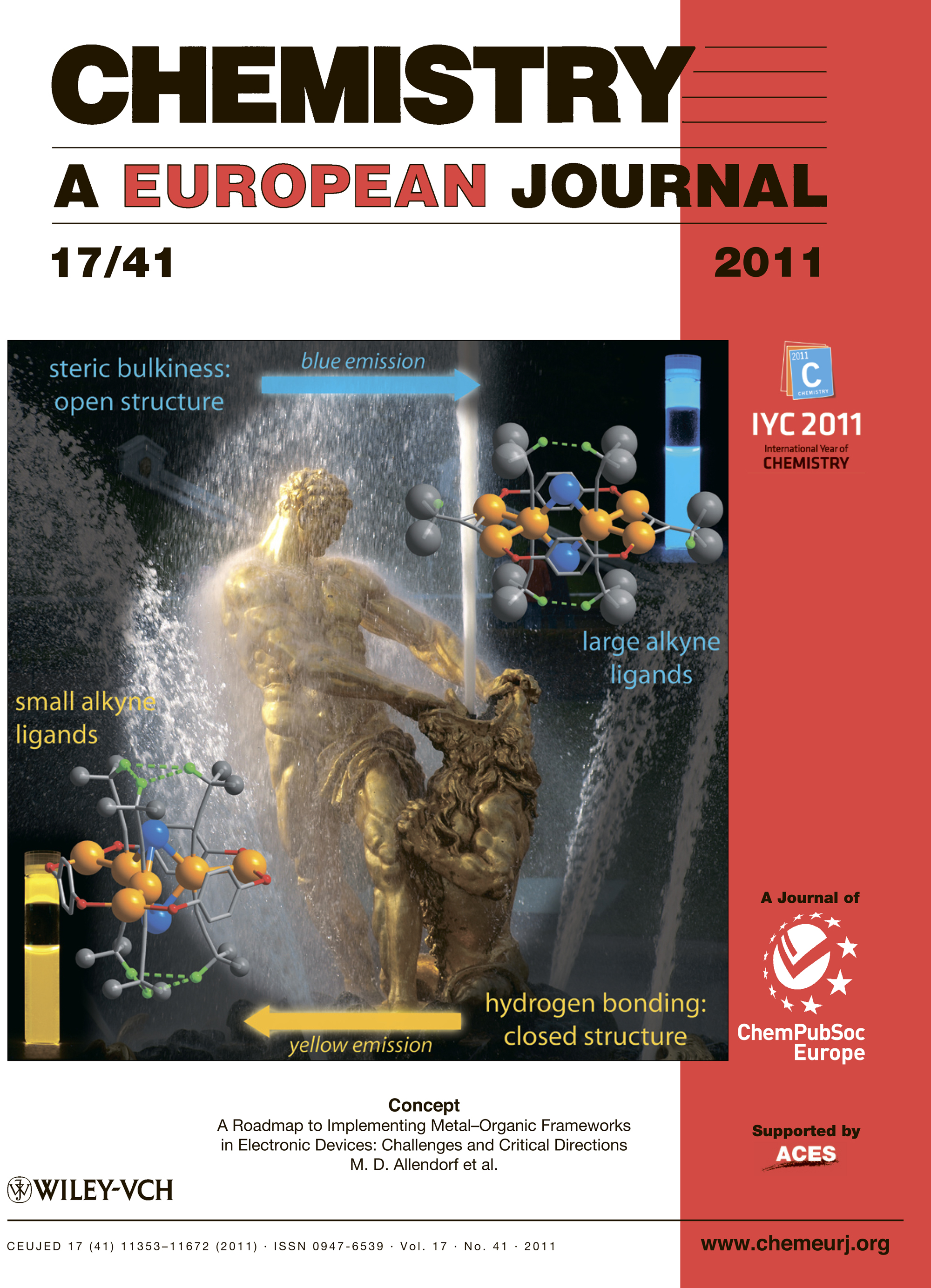
 |

|

|

|
|
D.O. Kozina, J.R. Shakirova, E.E. Galenko, V.V. Porsev, V.V. Gurzhiy, A.F. Khlebnikov, S.P. Tunik,
Unusual Reactivity and Photophysical Properties of the Pt(II) Pincer Complexes Containing 6,6'-diphenyl-2,2'-bipyridine ligands,
Eur. J. Inorg. Chem., (2021)
DOI: 10.1002/ejic.202000827
A series of novel 6,6'-diphenyl-2,2'-bipyridine ligands modified with the substituents at phenyl and bipyridine moieties
have been prepared and used in the synthesis of pincer platinum chloride complexes
1–3, [Pt(NNC-R)Cl].
Reactions of the obtained compounds with triphenylphosphine proceed through unusual pathway,
which gives the [Pt(NNC–R)(PPh3)2Cl] products containing two phosphine ligands, with the chloride retained
in coordination sphere and diphenyl-bipyridine fragment coordinated in
η1-mode through metalation of a pyridine ring.
The complexes 1–3 are phosphorescent in dichloromethane solution and in solid state.
Their photophysical characteristics were determined and analyzed by DFT calculations, which gave assignment
of emissive excited state character with the major contribution from the intraligand charge transfer (3ILCT, Ph-bipyridine)
and ligand centered (3LC, bipyridine fragment) transitions.
|
 |
 |

|

|

|
|
A.A. Penney, V.V. Sizov, E.V. Grachova, D.V. Krupenya, V.V. Gurzhiy, G.L. Starova and S.P. Tunik, Aurophilicity in Action: Fine-tuning the
Gold(I)–Gold(I) Distance in the Excited State to Modulate the Emission in a Series of Dinuclear Homoleptic
Gold(I)–NHC complexes, Inorg. Chem., (2016)
DOI: 10.1021/acs.inorgchem.5b02722
A series of dinuclear NHC carbene homoleptic Au(I) complexes based on the benzimidazol-2-ylidene scaffold with alkyl spacers of varying length was prepared.
Bromide-binding behavior of the complexes was qualitatively probed in solution by means of NMR and luminescence spectroscopy.
On the basis of theoretical investigations, it was proposed that emission in solution originates from the binding of solvent molecules or bromide
counterions by the triplet excited state of the cations. For the first time, a detailed DFT study established a clear link between bromide coordination
to the Au(I) centers and the strength of the intracationic aurophilic interaction in the triplet excited state.
|
 |
 |

|

|

|
|
A.A. Beljaev, D.V. Krupenya, E.V. Grachova, V.V. Gurzhiy, A.S. Melnikov, P.Yu. Serdobintsev, E.S. Sinitsyna, E.G. Vlakh, T.B. Tennikova and S.P. Tunik,
Supramolecular AuI-CuI complexes as new luminescent labels for covalent bioconjugation, Bioconjugate Chem., (2016)
DOI: 10.1021/acs.bioconjchem.5b00563
Two new supramolecular Au(I)-Cu(I) cluster complexes with highly reactive aldehyde and isothiocyanate groups have been synthesized.
The both compounds obtained demonstrated bright emission in solution with the excited-state lifetime in microsecond domain both under
single- and two-photon excitation.
It has been found that the both complexes form the covalent conjugates with proteins of different molecular size (soybean trypsin inhibitor,
human serum albumin, rabbit anti-HSA antibodies). The conjugates demonstrated a high level of the phosphorescent emission from the covalently
bound label, excellent solubility, and high stability in physiological media.
The measured biological activity of one of the labeled model proteins clearly showed that introduced label did not prevent the biorecognition
and specific protein-protein complex formation that was extremely important for the application of the conjugates in biomolecular detection and imaging.
|
 |
 |

|

|

|
|
A.I. Solomatina, D.V. Krupenya, V.V. Gurzhiy, I. Zlatkin, A.P. Pushkarev, M.N. Bochkarev, N.A. Besley, E. Bichoutskaia, S.P. Tunik,
Cyclometallated platinum(II) complexes containing NHC ligands; synthesis, characterization, photophysics and their application as emitters in OLEDs,
Dalton Trans., (2015)
DOI: 10.1039/C4DT03106G
A series of NHC carbene Pt(II) complexes based on cyclometallated phenylpyridine and benzoquinoline ligands have been synthesized.
The complexes display moderate to strong phosphorescence in solution and in the solid state, which is related to the metal center modulated
intraligand pp* transitions located at the aromatic system of the cyclometallated ligands with some contribution of the MLCT excited state.
The nature of emission observed was also studied using the DFT and TDDFT approaches which confirmed the assignment mentioned above.
The compounds obtained were also used to prepare OLED devices, which display good luminance efficiency emitting in the green area of the visible spectrum.
|
 |
 |

|

|

|
|
I.O. Koshevoy, C.-L. Lin, A.J. Karttunen, J. Janis, M. Haukka, S.P. Tunik, P.-T. Chou, T.A. Pakkanen,
Highly luminescent octanuclear AuI-CuI clusters adopting two structural motifs: The effect of aliphatic alkynyl ligands,
Chem. Eur. J., (2011)
DOI: 10.1002/chem.201101936
A family of novel intensely luminescent octanuclear Au(I)-Cu(I) clusters bearing aliphatic and hydroxyl-aliphatic alkynyl ligands and the bridging diphosphines
was effectively synthesized by self-assembly reactions of the homoleptic (AuC2R)n precursors with stoichiometric amounts of
PPh2C6H4PPh2 phosphine and Cu(I) ion.
Steric bulkiness of the alkynyl ligands and intramolecular hydrogen bonding are suggested to play an important role in stabilizing the different type of
cluster structural motif. All the complexes exhibit intense photoluminescence in solution with emission parameters that depending on the
geometrical arrangement of the octanuclear metal core.
|
 |
 |

|

|

|
|

|
Last update 04.10.2022, design Ludmila Kuchina, content Elena Grachova, (c)2012-2022

|